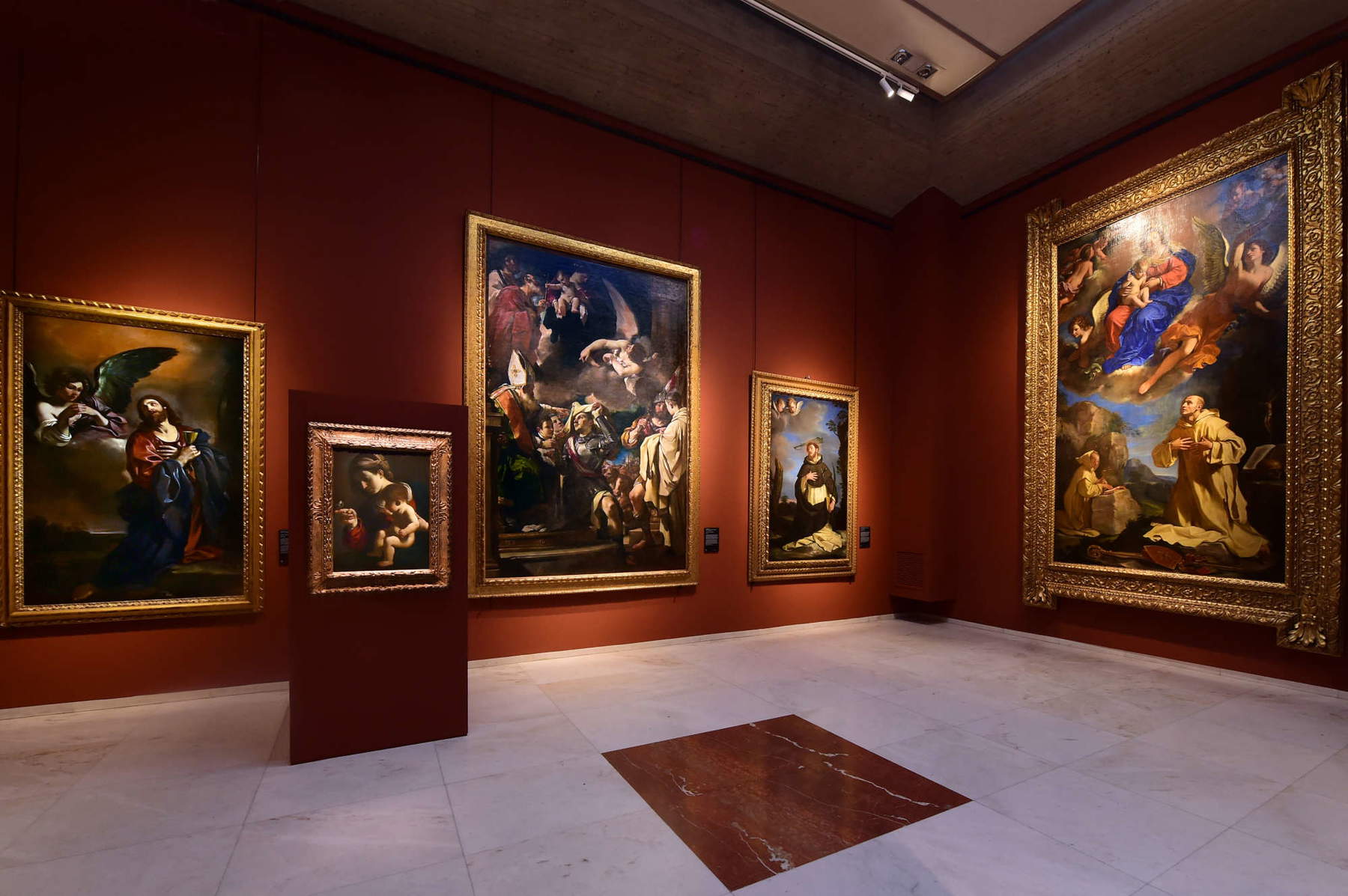Pinacoteca Nazionale di Bologna, rearranging the rooms of the seventeenth and eighteenth centuries
The Pinacoteca Nazionale di Bologna gets a makeover: following the Guercino exhibition in the studio, the museum’s rooms housing works from the 17th and 18th centuries reopen to the public on Saturday, March 30, 2024, with a new exhibition itinerary, a new layout, and a revamped image. The overhaul of this section of the museum is part of the general work of rethinking itineraries and upgrading museum layouts that began in 2023 with the Renaissance section of the Pinacoteca.
The new narrative of the seventeenth- and eighteenth-century wing of the Pinacoteca, curated by Mirella Cavalli and Maria Luisa Pacelli and carried out with the collaboration of Carmen Santi and Federica Chiura of the museum’s Office of Communication, “was designed”, explains Director Pacelli, “to meet the need for clarity in the communication of content, for a better contextualization of the works, and to offer as linear and eloquent a reading as possible of the development of the great Bolognese painting of the seventeenth and eighteenth centuries.”
The itinerary is divided into nine sections that follow both a chronological order, common to the entire gallery, and a thematic one, focusing on genres such as the altarpiece, the portrait, and the landscape. Emphasis is also placed on comparing the works of the artists who conditioned the development of Bolognese art in this long period, Ludovico, Annibale Carracci, and Guido Reni, with those of the new generations that went beyond the second half of the 17th century. The central and largest room in this area of the museum, already involved in the staging of the exhibition Guercino in the studio (October 5, 2023-February 25, 2024), has been entirely dedicated to the genius of Guercino, while for the 18th century ample space has been reserved for Giuseppe Maria Crespi, among the most original and eccentric figures of his time, as well as the Gandolfi family and Donato Creti. The itinerary ends with the room dedicated to the “imperturbable stillness of Arcadian landscapes,” which contrasts with the popular register of Crespi’s works.
The remounting project was the occasion for an extraordinary monitoring and conservation maintenance campaign on the works involved. This was made possible thanks to the work of Elisabetta Polidori and Gisella Pollastro of the Pinacoteca’s Office for Technical Management of Collections, Restoration, Preventive Conservation and Exhibitions, who were assisted by Monica Vezzani of the Soprintendenza Archeologia belle arti e paesaggio for the metropolitan city of Bologna and the provinces of Modena, Reggio Emilia and Ferrara.
The exhibition design was supervised by Silvia Gaiba, architect in charge of the Pinacoteca’s Technical Office, who developed a project in continuity with the one carried out by Studio Bettini Architetti when the Renaissance section was rearranged. While harmonizing with Leone Pancaldi’s historical layout, the new project, in addition to updating the technical apparatus of the rooms, aims to meet the needs of the contemporary public in terms of accessibility and inclusiveness. The layout graphics are part of the more general revision of the coordinated image of the Pinacoteca, curated by Studio Eremo.
“After the rearrangement of the Renaissance Hall inaugurated in 2023,” says Mirella Cavalli, “the Pinacoteca has reconfigured the section of the Six-Eighteenth and Eighteenth Centuries, in response to the need for clarity of display, a better contextualization of the works, and a reading as linear as possible of the development of Bolognese painting in the seventeenth and eighteenth centuries. This long period is particularly well represented in the collection, both qualitatively and quantitatively, an aspect that will allow us to exhibit works in rotation, gradually bringing out the most significant artistic personalities.”
“In the chronological order, common to the entire gallery,” Cavalli adds, "there is an arrangement by theme, including the altarpiece and landscape. In addition, the creations of the artists who conditioned the decline of Bolognese art in this long period, Ludovico and Annibale Carracci and Guido Reni, are compared with those of the new generations. To the genius of Guercino room 26, already involved in the staging of the exhibition Guercino in the studio, has been entirely dedicated. The new Guercino room joins those dedicated to the most illustrious personalities of Bolognese painting, such as the Carracci and Guido Reni. In view of the Pinacoteca’s participation in the exhibition Guercino. The Painter’s Trade (Turin, Musei Reali, March 23-July 28, 2024), with a significant nucleus of loans including the Saint Sebastian curated by Irene, until July the Guercino room will host, in place of the famous painting, Ludovico Carracci’s Conversion of Saint Paul, a fundamental work in the formation of the artist from Cento and as such a stimulus for comparisons, particularly with the Dressing of the Saint Guercino. The new communication also involves the Cesare Gnudi hall, although there have been no changes in the layout on this specific occasion."
In conjunction with the reopening of the Baroque section, the cost of the museum’s full-price ticket reverts to €10 for both ticket office and online purchases. Museum opening hours remain unchanged: Tuesday through Sunday and holidays 9 a.m. to 7 p.m., closed Monday. On the occasion of Easter and Easter Monday, the Pinacoteca will be open Saturday, March 30, Sunday, March 31, and Monday, April 1, 9 a.m.-7 p.m. The Pinacoteca will then be closed on April 2 to make up for the weekly rest following the special opening on April 1 (Easter Monday). Palazzo Pepoli Campogrande, on the other hand, will be open as usual on Saturday, March 30 from 9 a.m. to 7 p.m.
 |
| Pinacoteca Nazionale di Bologna, rearranging the rooms of the seventeenth and eighteenth centuries |
Warning: the translation into English of the original Italian article was created using automatic tools. We undertake to review all articles, but we do not guarantee the total absence of inaccuracies in the translation due to the program. You can find the original by clicking on the ITA button. If you find any mistake,please contact us.






























